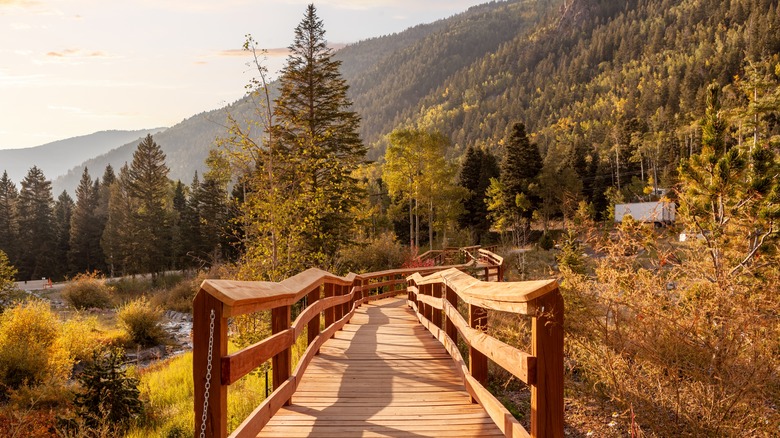Fall hiking in Taos
To get a closer look at the leaves, ditch your vehicle and head out into the crisp autumn air. The aspens that were a yellow blur from your car window become resplendent giants in fluttering golden gowns when you take the time to stand among them. It’s also easier to spot wildlife from a walking trail than from your car, simply because you’re moving more slowly. While hiking in the Sangre de Cristo mountains, look out for wildlife such as elk, deer, and bighorn sheep, and scan the treetops and horizons for bald eagles, golden eagles, and red-tailed hawks. The area is also home to black bears, bobcats, and mountain lions — but you probably won’t see any of these reclusive creatures on your day stroll.
Fortunately, Taos and its surrounding areas boast a dizzying array of hiking trails, with many opportunities to see fall foliage. The Taos Ski Valley has numerous aspen groves and is an excellent place to start for trekkers with a penchant for leaf peeping. To boot (hiking boot, if you will) September and October are great months for meandering in northern New Mexico, as the days tend to be sunny and pleasant, with average temperatures ranging from the mid-60s to low 70s. That said, be prepared for sudden weather changes whenever you venture on foot into the mountains. Bring clothing for all seasons, including warm and waterproof layers, along with ample water, snacks, and a decent first aid kit.
Autumn adventures on water and land

To inject some adrenaline into your outdoor adventures, consider adding whitewater rafting on the mighty Rio Grande to your fall itinerary. The Rio Grande winds through deep canyons near Taos and is one of North America’s longest rivers, flowing 1900 miles from its headlands in the Rocky Mountains all the way to the Gulf of Mexico. While the Taos Box (the most daring stretch of Rio Grande whitewater) is only runnable during spring and summer, the Racecourse section remains open in September and early October, depending on water levels. The Racecourse boasts a few moderate rapids interspersed by calm waters, giving guests the chance to relax between thrills and take in all the sights. In addition to fall foliage, rafters may also glimpse bighorn sheep, mule deer, river otters, and many species of birds in the magnificent gorge.
Horseback riding is an option for Taos visitors who prefer to stay on land. Opportunities abound for guided trail rides on the Taos Plateau and in the surrounding foothills, with trips ranging from an hour to a full day or more. In addition to being skilled equestrians, many trail guides are also experts in the area’s natural history and rich folklore. So, between gallops, you may hear a tale or two, with the chance to learn more about the area’s unique cultural heritage, which weaves together distinct Native, Hispanic, and Anglo elements.

